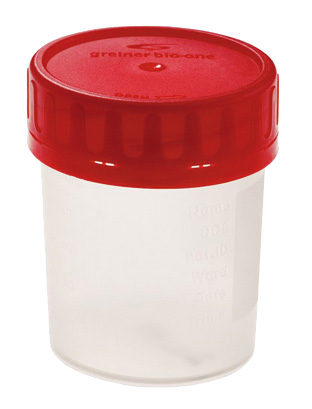Referenties
Recent op pubmed
Hond
- Boehm, TMSA, Mueller, RS. Dermatophytosis in dogs and cats - an update. Tierarztl Prax Ausg K Kleintiere Heimtiere. 2019;47 (4):257-268. doi: 10.1055/a-0969-1446. PubMed PMID:31434126 .
- Bond, R. Superficial veterinary mycoses. Clin Dermatol. 2010;28 (2):226-36. doi: 10.1016/j.clindermatol.2009.12.012. PubMed PMID:20347667 .
- Monod, M, Fratti, M, Mignon, B, Baudraz-Rosselet, F. [Dermatophytes transmitted by pets and cattle]. Rev Med Suisse. 2014;10 (424):749-53. . PubMed PMID:24772808 .
- Chermette, R, Ferreiro, L, Guillot, J. Dermatophytoses in animals. Mycopathologia. 2008;166 (5-6):385-405. doi: 10.1007/s11046-008-9102-7. PubMed PMID:18478363 .
- Iduu, NV, Kantzler, R, Raiford, D, Bixler, B, Chenoweth, K, Wang, C et al.. Dual-Emission FRET-PCR Outperforms SYBR Green and EvaGreen for Accurate Discrimination of Primary Canine Dermatophytes: Microsporum canis, Nannizzia gypsea, and Trichophyton mentagrophytes. J Fungi (Basel). 2025;11 (10):. doi: 10.3390/jof11100708. PubMed PMID:41149898 PubMed Central PMC12565227.
- Elad, D. Therapy of Non-Dermatophytic Mycoses in Animals. J Fungi (Basel). 2018;4 (4):. doi: 10.3390/jof4040120. PubMed PMID:30380772 PubMed Central PMC6308939.
- Gupta, AK, Wang, T, Susmita,, Talukder, M, Bakotic, WL. Global Dermatophyte Infections Linked to Human and Animal Health: A Scoping Review. Microorganisms. 2025;13 (3):. doi: 10.3390/microorganisms13030575. PubMed PMID:40142467 PubMed Central PMC11945039.
- Zur, G, Elad, D. In vitro and in vivo effects of lufenuron on dermatophytes isolated from cases of canine and feline dermatophytoses. J Vet Med B Infect Dis Vet Public Health. 2006;53 (3):122-5. doi: 10.1111/j.1439-0450.2006.00925.x. PubMed PMID:16629723 .
- Pin, D. Non-dermatophyte Dermatoses Mimicking Dermatophytoses in Animals. Mycopathologia. 2017;182 (1-2):113-126. doi: 10.1007/s11046-016-0090-8. PubMed PMID:27853914 .
- Mazzotta, E, Lucchese, L, Corrò, M, Ceglie, L, Danesi, P, Capello, K et al.. Zoonoses in dog and cat shelters in North-East Italy: update on emerging, neglected and known zoonotic agents. Front Vet Sci. 2024;11 :1490649. doi: 10.3389/fvets.2024.1490649. PubMed PMID:39664895 PubMed Central PMC11631924.
Kat
- Boehm, TMSA, Mueller, RS. Dermatophytosis in dogs and cats - an update. Tierarztl Prax Ausg K Kleintiere Heimtiere. 2019;47 (4):257-268. doi: 10.1055/a-0969-1446. PubMed PMID:31434126 .
- Moskaluk, AE, VandeWoude, S. Current Topics in Dermatophyte Classification and Clinical Diagnosis. Pathogens. 2022;11 (9):. doi: 10.3390/pathogens11090957. PubMed PMID:36145389 PubMed Central PMC9502385.
- Frymus, T, Gruffydd-Jones, T, Pennisi, MG, Addie, D, Belák, S, Boucraut-Baralon, C et al.. Dermatophytosis in cats: ABCD guidelines on prevention and management. J Feline Med Surg. 2013;15 (7):598-604. doi: 10.1177/1098612X13489222. PubMed PMID:23813824 PubMed Central PMC11148949.
- Mignon, B, Tabart, J, Baldo, A, Mathy, A, Losson, B, Vermout, S et al.. Immunization and dermatophytes. Curr Opin Infect Dis. 2008;21 (2):134-40. doi: 10.1097/QCO.0b013e3282f55de6. PubMed PMID:18317035 .
- Vermout, S, Tabart, J, Baldo, A, Mathy, A, Losson, B, Mignon, B et al.. Pathogenesis of dermatophytosis. Mycopathologia. 2008;166 (5-6):267-75. doi: 10.1007/s11046-008-9104-5. PubMed PMID:18478361 .
- Bond, R. Superficial veterinary mycoses. Clin Dermatol. 2010;28 (2):226-36. doi: 10.1016/j.clindermatol.2009.12.012. PubMed PMID:20347667 .
- Monod, M, Fratti, M, Mignon, B, Baudraz-Rosselet, F. [Dermatophytes transmitted by pets and cattle]. Rev Med Suisse. 2014;10 (424):749-53. . PubMed PMID:24772808 .
- Nojo, H, Watanabe, A, Makimura, K, Kano, R. Genomic Analysis of Terbinafine Resistance in Microsporum canis Isolated from a Feline Dermatophytosis. Med Mycol J. 2025;66 (1):17-20. doi: 10.3314/mmj.24-00024. PubMed PMID:40024789 .
- Barrs, VR, Beczkowski, PM, Talbot, JJ, Hobi, S, Teoh, SN, Hernandez Muguiro, D et al.. Invasive Fungal Infections and Oomycoses in Cats: 1. Diagnostic approach. J Feline Med Surg. 2024;26 (1):1098612X231219696. doi: 10.1177/1098612X231219696. PubMed PMID:38189288 PubMed Central PMC10949879.
- Chermette, R, Ferreiro, L, Guillot, J. Dermatophytoses in animals. Mycopathologia. 2008;166 (5-6):385-405. doi: 10.1007/s11046-008-9102-7. PubMed PMID:18478363 .
Paard
- Chermette, R, Ferreiro, L, Guillot, J. Dermatophytoses in animals. Mycopathologia. 2008;166 (5-6):385-405. doi: 10.1007/s11046-008-9102-7. PubMed PMID:18478363 .
- Drerup, KA, Schwarz, T, Brasch, J. [Trichophyton equinum meets Chanel]. Dermatologie (Heidelb). 2023;74 (9):707-710. doi: 10.1007/s00105-023-05162-1. PubMed PMID:37280370 .
- Elad, D. Therapy of Non-Dermatophytic Mycoses in Animals. J Fungi (Basel). 2018;4 (4):. doi: 10.3390/jof4040120. PubMed PMID:30380772 PubMed Central PMC6308939.
- Pin, D. Non-dermatophyte Dermatoses Mimicking Dermatophytoses in Animals. Mycopathologia. 2017;182 (1-2):113-126. doi: 10.1007/s11046-016-0090-8. PubMed PMID:27853914 .
- Watanabe, R, Huruta, H, Ueno, Y, Nukada, T, Niwa, H, Shinyashiki, N et al.. Antifungal susceptibility of dermatophytes from racehorses in Japan. Vet Dermatol. 2021;32 (5):474-e129. doi: 10.1111/vde.12993. PubMed PMID:34189781 .
- Schaufuss, P, Brasch, J, Steller, U. Dermatophytes can trigger cooperative (CAMP-like) haemolytic reactions. Br J Dermatol. 2005;153 (3):584-90. doi: 10.1111/j.1365-2133.2005.06679.x. PubMed PMID:16120147 .
- Lund, A, Deboer, DJ. Immunoprophylaxis of dermatophytosis in animals. Mycopathologia. 2008;166 (5-6):407-24. doi: 10.1007/s11046-008-9111-6. PubMed PMID:18478355 .
- Reuter, J, Wölfle, U, Korting, HC, Schempp, C. Which plant for which skin disease? Part 2: Dermatophytes, chronic venous insufficiency, photoprotection, actinic keratoses, vitiligo, hair loss, cosmetic indications. J Dtsch Dermatol Ges. 2010;8 (11):866-73. doi: 10.1111/j.1610-0387.2010.07472.x. PubMed PMID:20707877 .
- Cabañes, FJ, Abarca, ML, Bragulat, MR. Dermatophytes isolated from domestic animals in Barcelona, Spain. Mycopathologia. 1997;137 (2):107-13. doi: 10.1023/a:1006867413987. PubMed PMID:9335154 .
- Chollet, A, Wespi, B, Roosje, P, Unger, L, Venner, M, Goepfert, C et al.. An outbreak of Arthroderma vanbreuseghemii dermatophytosis at a veterinary school associated with an infected horse. Mycoses. 2015;58 (4):233-8. doi: 10.1111/myc.12301. PubMed PMID:25676308 .
Diersoorten en referenties
Cavia
Ezel
Hond
Kat
Knaagdier
Konijn
Paard
Rat
Kenmerken
Afkorting
Drmtf PCR
Rubriek
Pcr
Methode
qPCR
Doorlooptijd
1 dag
Staalname

Haar

Afkrabsel
* = voorkeur
Laatst geupdate op 29 april 2025 om 09:18
